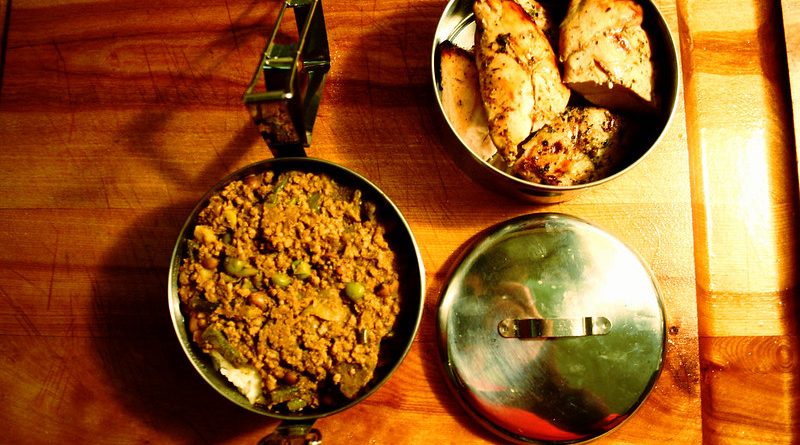Operation Lunch: The Art of Tiffin
Tiffin Facts
Where: Mumbai, South India
What’s it about: Military efficiency system from British Raj of lunch time home to office food delivery by dabawallahs.
What’s in it: Platter of Indian pancakes, dumplings, donuts, Bhajis, samosas and curries
Serving Suggestion: Order from a street stall or cafe and eat with fingers
In Southern India light meals and finger-food is always referred to as tiffin, an Anglo-Indian word meaning ‘snack’. This vegetarian fare usually includes some kind of a spicy side dish, served with a starch like dosas (pancakes) and idilis (dumplings). It is commonly eaten at breakfast and lunch, but different dishes are more appropriate depending on the time of day.
Read: An Introduction to Indian Cuisine
In the suburbs of Mumbai, suburban housewives prepare 3-tiered lunch boxes known as dabbas for their husbands, hard at work in the city’s offices. The meal, which includes a main dish, a side dish, rice or chappatis, and pickles, is delivered direct to the workplace by one of the city’s devoted dabawallahs. These food peddlers can’t read, but use numbers and markings to distinguish between the 10,000 dabbas they deliver on a daily basis. The task is completed in just two hours, from midday to 2pm, and at 2 o’clock the whole process is reversed and each box is returned to it’s rightful home, making no mistakes. It’s a miracle of organisation and efficiency.
Origins and History
Though many of the dishes that now come under the umbrella of tiffin have long been a part of traditional southern Indian cuisine, the tiffin delivery system began under the British raj more than a century ago. British workers were not used to spicy Indian flavour and asked the Parsis to provide them with a blander lunch and dinner. The brigade of dabawallas grew up out of this request, and although these days it’s not only the peculiar tastes of foreigners that they cater to, it remains an upper class, quintessentially memsahib-and-servant arrangement.
The trade of the dabbawallahs is passed down through generations of families which come from the villages in the Deccan plateau. There are no dabbawallahs anywhere else in India (or the world), and they are extremely proud of their work. They dress in their trademark flowing pyjamas and Ghandi cap, which is the traditional dress of the Deccan plateau.
Serving Suggestion
You don’t have to have a high powered job in Mumbai and a devoted wife to eat tiffin. There are many restaurants throughout Southern India which serve typical light snacks throughout the day.
Though a few kinds of tiffin may be well known to Westerners, here’s a guide to some favourites that are likely to be on the menu:
Iddli
Steamed rice or lentil dumplings, served with sambhar and chutney. They are a very popular breakfast dish and are low fat and inexpensive.
Dosai
Fried wafer-thin crepes made from rice or lentil. It can be filled with sambhar, or potato and onion (masala), together with a spicy cocoanut chutney.
Vadai
Deep-fried savory donuts made from lentils, onion and spices. They are delicious covered in yoghurt sauce.
Bhaji
Batter-coated vegetables: everything from potato to chillies, though in the west onion bhajis are the most well known.
Samosas
Triangular pastry parcels with a meat or vegetable filling.
Biryani and Pulao
These are best known in the west as varieties of rice served on the side of a curry. They are actually a rich and flavoursome combination of rice, spices, meat and vegetables all cooked up together.
Most food in Southern India is eaten with the fingers. The idea is that if it’s cool enough to touch with your hands it won’t burn your mouth. If a particular dish is too messy too eat with your hands it’s perfectly acceptable to ask for a spoon, especially if you’ve not yet perfected the technique. Note also that you should never use your left hand for eating in India: it is considered impure and should never come into contact with food.




